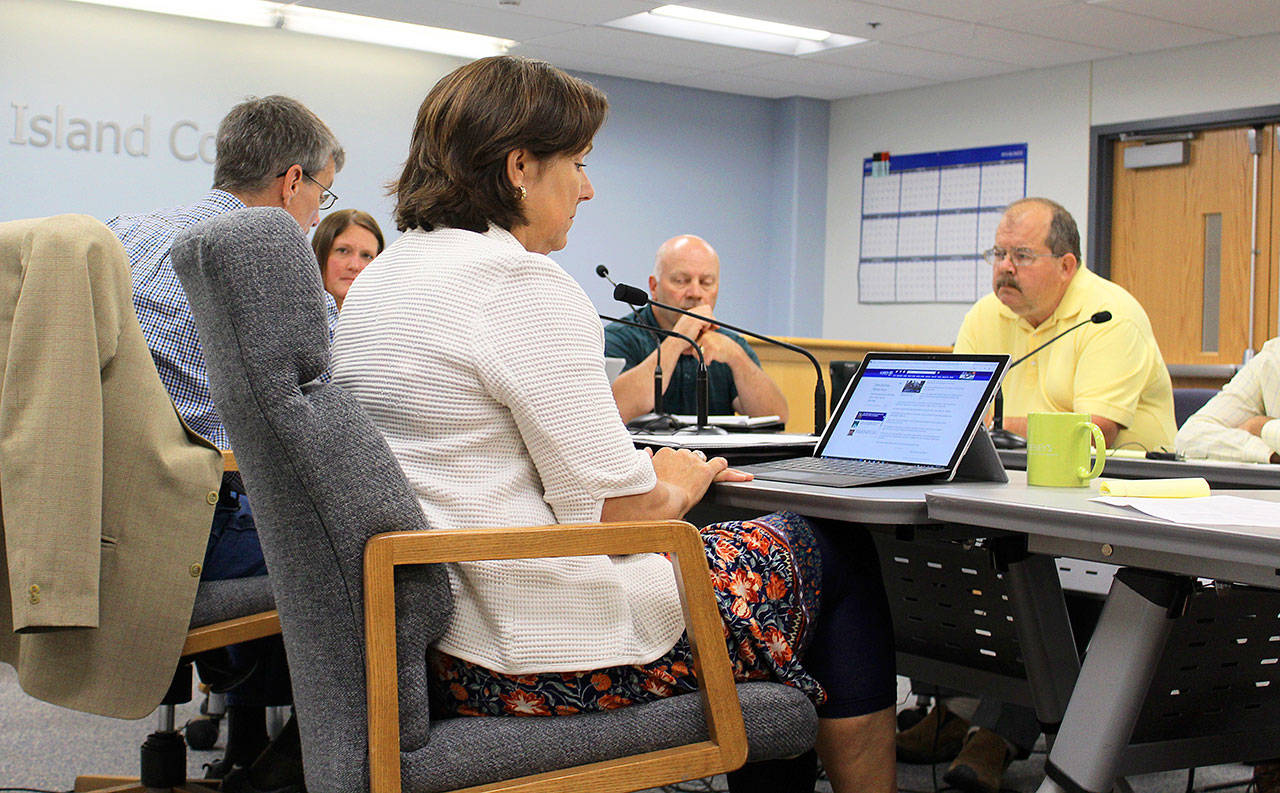Junked cars sprouting on lawns. People turning empty houses into drug dens. Illegally parked and lived-in RVs.
These are just examples of about 80 open cases of code violations lingering on Island County’s books since 2016.
Island County commissioners delved into possible solutions to the on-going conundrum at a recent work session with health, legal, law enforcement, public work and human services officials.
Some county departments are being asked to pitch in to address code violations that might be better solved with social services rather than citations.
“We’re not doing a very effective job. Cases that have involved safety violations, we respond immediately,” Hiller West, community development director, told the group.
“We allocate resources as we get complaints, but it’s not a real structured response.”
Like many rural counties where people own and spread out on many acres, accumulate “stuff” and take on tenants, balancing public health and safety concerns against the rights of private property owners has long vexed Island County government officials.
In years past, Island County was left with huge bills to remove and clean up waste and rubble left behind on foreclosed property.
Commissioner Jill Johnson pointed out several current examples where sending outreach workers from health and human services might help solve persistent problems.
“There’s been illegal camps with no septic systems for the past two years,” she said of a situation near Freeland.
“Wouldn’t it make more sense to get them a port-a-potty and a handwashing station and timelines for compliance?”
People who’ve become addicted to painkillers or hoarders whose collections are spreading onto the neighbors’ lawns might welcome someone showing up at their door with compassion instead of citations, she added.
“People don’t tattle on their neighbors because of a greenhouse. They tattle on their neighbors because something else is going on,” Johnson said. “Maybe we need to get a mental health outreach worker out there.
“Some of these cases do not belong in code enforcement.”
Of the cases involving buildings, property, animals, environmental health and other areas of concern, 17 are located in Oak Harbor, 41 are located in Coupeville and south to Clinton, and 22 are on Camano Island, West said.
Noting that half of the cases reside in the district she represents, Helen Price Johnson agreed that a new strategy is needed.
“What we want to do is get people on a path to enforcement,” she said. “Where we can help people get on the path is what we should be doing.”
Public Health Director Keith Higman said the county has foreclosed on houses where owners have ignored years of citations and fines for on-going violations. Some might have been resolved with alternative approaches, he suggested.
“The only thing we can do is fine them or threaten them with legal action and that doesn’t result in behavior change,” Higman said.
“I don’t think this is a code-enforcement problem. It’s a behavior-change problem.
“What we have to do is look in our toolbox. What can we use as incentive?”
He cited the county’s low-interest loan program made available to people needing to fix their septic systems as an example of offering help so “we don’t have to kick them out of their house.”
Commissioner Rick Hannold suggested creating easy-to-use vouchers with an expiration date as a way to get people to start making trips to the county dump.
John Brazier, code enforcement planner, provided a list of the 80 violations and areas of location without specifying addresses.
About one quarter of the cases involve outdoor storage of junk and junk vehicle violations. Active building violations account for more than 26 cases; squatters comprised 10 cases while six involved illegal home occupation or home industry violations.
Violating septic system, lighting, zoning, property line ordinances and illegal clearing of land also made the list.
Some involved unpermitted alterations of wetlands and buffer zones and illegally clearing land in eagle habitats and geologically hazardous slopes.
“With new cases presented every week, repeat offenders and non-resolved cases, the system continues to be clogged,” Brazier said.
“To solve public concerns, it is pertinent for the code enforcement team to work steadfastly with multiple departments.”
Brazier’s only been on the job three months and another code enforcement officer was just hired.
“I feel like I stepped into a hornet’s nest,” he said in an interview.
He described the challenges faced daily by the code enforcers as “health and safety, community resources and very angry and hostile citizens.”



